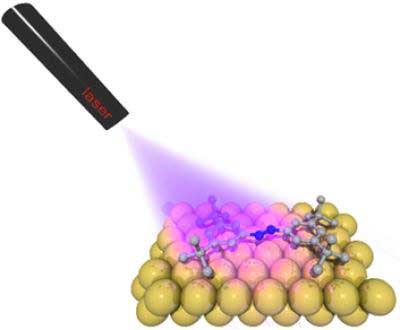| Posted: July 2, 2007 |
Remotely controlled nanomachines |
|
(Nanowerk News) Physicists at the University of California at Berkeley have produced images that show how light can control some of the smallest possible machines. By shining ultraviolet laser light on tiny molecules of azobenzene adhered on a layer of gold, they could force the molecules to change shape at will. Potentially, the molecules could be incorporated into nanomachines in the form of remotely controlled switches, pistons or other movable components.
|
 |
| Adding legs to molecules of azobenzene adhered to a gold surface allows them to change shape when illuminated with a UV laser. (Image: M. J. Comstock et al. Physical Review Letters)
|
|
Scientists have experimented with shape-shifting azobenzene in previous studies, but the molecules only responded properly when suspended in liquids or incorporated into plastics, neither of which makes a very good foundation for complex nanomachines. In order to get the molecular machines to function while mounted on a gold surface, the physicists first had to add legs built of carbon and hydrogen atoms to hold the molecules slightly away from the metal. Although the legs anchoring the molecules to the surface only provided a fraction of a nanometer of clearance (less than a billionth of a meter), it was enough to allow the molecules to move in response to the UV illumination.
|
|
The team confirmed their achievement with a series of scanning tunneling microscope images showing that they could switch the molecules' shapes from one configuration and back again.
|

